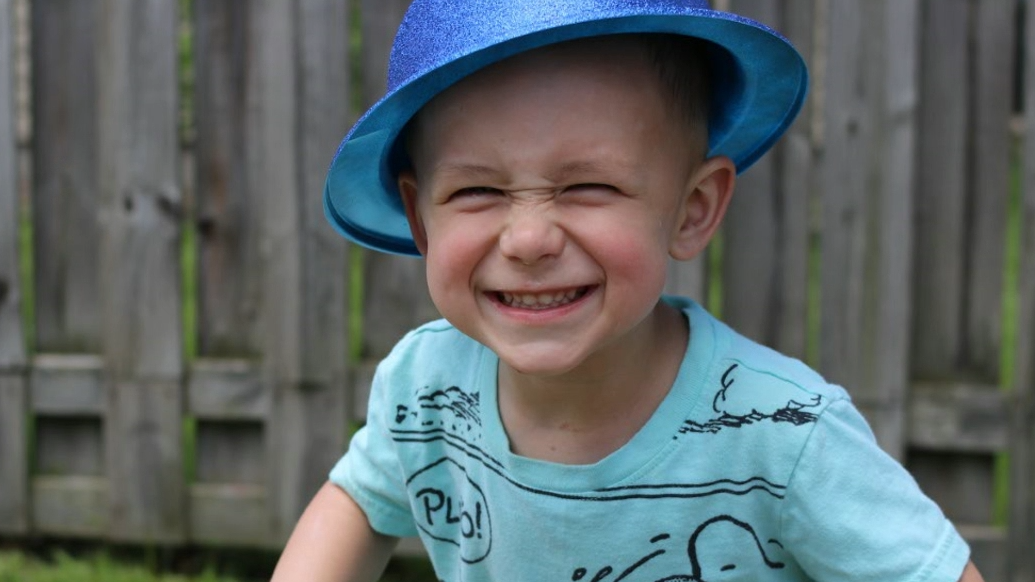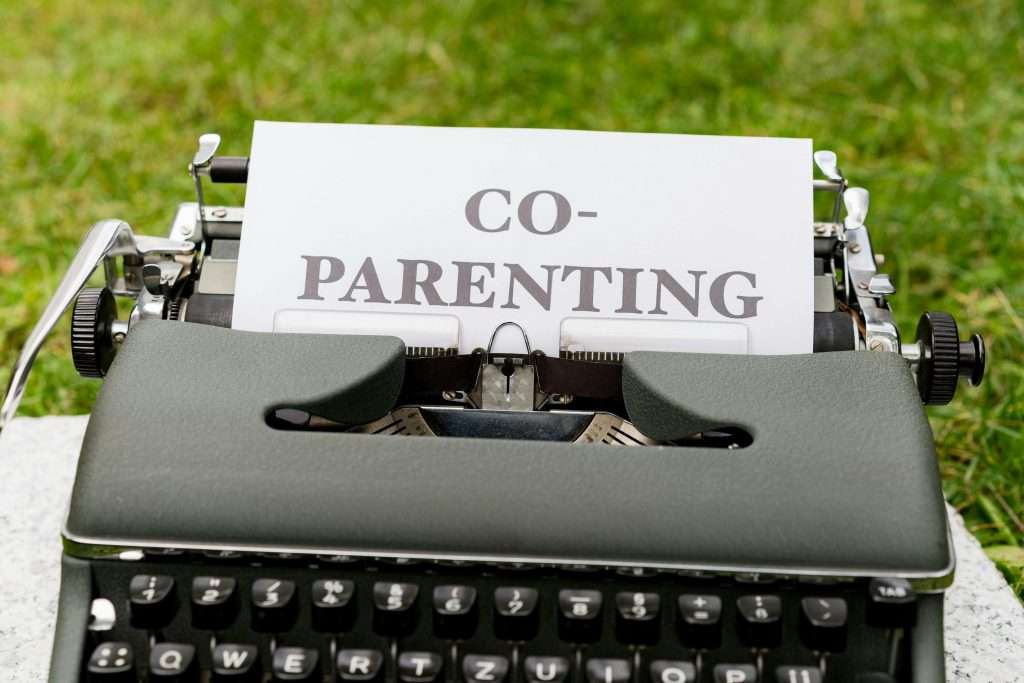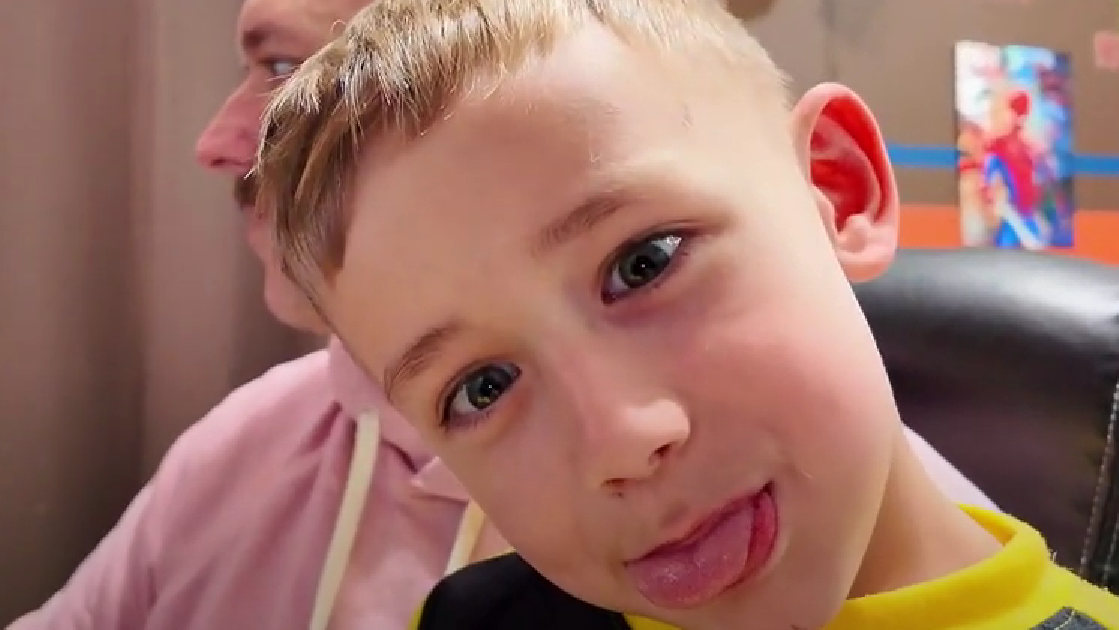When I first became Tanner’s dad, I imagined a life filled with simple joys and everyday moments—not a journey through courtrooms and shared parenting agreements. I never imagined parallel parenting would shape our lives, yet when the reality of legal battles set in, one truth became undeniable: no matter the complexity, Tanner’s well-being had to be my top priority.
From the moment I realized parallel parenting would be my reality, my focus shifted to ensuring Tanner felt heard, secure, and loved—regardless of what was happening behind the scenes. It’s been a balancing act between my own desires as a father and doing what’s best for him. While I may firmly advocate for my rights as a parent, Tanner never sees any of that conflict. All he knows is that his voice matters, and I’m doing everything I can to make his preferences a reality within the shared parenting plan.
This journey has taught me that being a single dad is about creating a world where Tanner can thrive, even amidst complexities. In this post, I’ll share the lessons I’ve learned, the challenges I’ve faced, and how I’ve balanced protecting Tanner’s world while standing strong on my rights as his dad.
Understanding Parallel Parenting
Parallel parenting isn’t a term most people are familiar with, but for many separated parents, it’s a reality they face—especially when shared parenting isn’t an option. It’s a distinct approach to raising a child separately, where both parents fulfil their responsibilities independently, with minimal direct communication. Unlike shared parenting, which involves regular collaboration, parallel parenting is all about each parent operating separately, focusing on their own time with the child.
In my case, parallel parenting became a necessity from the very beginning.
One parent—in this case, my ex-wife—was unwilling to work toward true shared parenting. This meant that while the court-mandated a shared parenting plan, the structure quickly turned into parallel parenting. And while this may not be a common situation, as most judges either look for mutual agreement or grant one parent full custody, it reflects a growing shift toward involving both parents in a child’s life.
Benefits for Tanner
Despite its challenges, parallel parenting has some key benefits—especially for Tanner. The greatest positive is that he has equal time and relationships with both of his parents. It allows him to grow and connect with both of us, maintaining strong bonds that might otherwise be harder to achieve if only one parent had custody.
I believe that any time a child can have consistent, active involvement from both parents, it’s a win for them.
Challenges and Emotional Realities
Of course, parallel parenting also brings its difficulties. The biggest challenge is staying in sync with Tanner’s needs and experiences when he’s with the other parent. Since there’s minimal communication between me and my ex, there are times when I’m left out of the loop about things that happen in Tanner’s life. I remember one week when Tanner came back from his mom’s place, and he casually mentioned that he’d started a new sport. It was a moment of joy for him, but for me, it highlighted the reality of parallel parenting—sometimes, you miss out on the small moments that shape your child.
Day-to-day, parallel parenting feels like living in two separate worlds.

When I have Tanner, I make decisions for him and follow our routines. When he’s with his mom, our contact is limited to a nightly phone call at 8 p.m., which allows Tanner to connect briefly with me. Beyond that, it can feel like Tanner is almost “absent” from my world for that week, which is hard as a parent who wants to be involved in every part of his child’s life.
Better Than the Alternative
While it’s far from ideal, and there are clear emotional downsides for parents, parallel parenting still stands as a better alternative to one parent having full custody. It ensures Tanner is surrounded by both of his parents, feeling their love and support—even if they aren’t on the same page.
Setting Boundaries and Establishing Routines
Setting boundaries in parallel parenting can feel like walking a tightrope—balancing fairness, independence, and Tanner’s well-being. For me, that balance started with a strategic shared parenting plan submitted to the court. In Ohio, either parent can propose a shared parenting plan, and knowing my ex wouldn’t submit one, I crafted a plan that was fair but leaned slightly in my favor.
The goal was to ensure Tanner’s best interests while creating a structure that could function, even with minimal communication between parents.
I knew it was crucial to develop a plan that not only prioritized Tanner’s needs but also anticipated potential communication challenges. I aimed to create a balance—one that felt fair but also gave me the ability to be a final decision-maker if necessary.
For example, when it comes to medical decisions, either parent can seek a second opinion if they disagree with the doctor’s recommendations, but if no consensus is reached, I have the final say. This wasn’t about being one-sided; it was about creating a fair structure that ensured Tanner’s needs were always met by the parent willing to communicate.
Choosing What to Communicate About
The shared parenting plan sets a solid framework for necessary discussions—specifically school and medical matters. Beyond these essentials, we operate independently. When Tanner’s at my home, I make decisions for him, and the same goes for his time with his mom. We each plan our own birthday celebrations, holidays, and day-to-day activities, maintaining special but separate experiences for Tanner. This helps keep conflict low and ensures Tanner isn’t caught in a tug-of-war over minor details. It’s not what I would choose if more collaboration were possible, but it’s how we’ve maintained peace for the past two years.
Creating Routines and Consistency for Tanner
While there aren’t shared routines between households, I’ve established consistent patterns at my home to give Tanner a sense of stability and comfort. Every school night at 8 p.m., we follow our familiar bedtime routine—picking out books together, sharing laughs over favorite stories, and then settling in for the night. On weekends, there’s no strict bedtime, but we’re usually in bed by 11 p.m. These routines help Tanner feel secure and provide a rhythm he can rely on when he’s with me. Although the lack of shared routines between both homes is one of the downsides of parallel parenting, having this structure in my home helps ground Tanner, even amidst the differences.

Lessons Learned and Final Thoughts
Looking back, there isn’t much I would have done differently when establishing the shared parenting plan. I accomplished what I set out to do: creating a balanced plan that supports Tanner’s well-being. While I tilted decision-making slightly in my favor, it was based on the need for a parent willing to collaborate to have the final say. And although the judge made minor adjustments, like Tanner attending school in his mom’s district, the plan ultimately worked in a way that benefited Tanner.
At the end of the day, every boundary and routine is built around ensuring Tanner knows he’s at the center of everything we do—no matter which house he’s in.
Effective Communication in Parallel Parenting
When it comes to communicating in parallel parenting, simplicity is key. Staying focused on what matters most is what keeps everything running smoothly. In parallel parenting, sometimes the best way to maintain peace is by saying less.
Communication naturally stays focused on Tanner because neither of us has a desire to talk about anything else. This “less is more” approach means that conversations happen only when necessary, staying short and directly related to Tanner’s needs. Whether it’s a quick note about a school event or a health update, we make sure every exchange is centered around our son, which helps prevent unnecessary conflict or personal disputes. To make it easy and efficient, we use Facebook Messenger as our main communication tool. While there’s some tension given our situation, we’ve always been able to keep conversations civil and centered around Tanner’s needs.

Facebook Messenger provides a practical way to share everything we need, from school announcements to quick updates about Tanner’s health—all in one place. Its built-in record-keeping ensures that every message, photo, and file remains accessible to both of us. Since no one can delete messages once they’re sent, it creates a level of transparency that has kept our communication clear, quick, and reliable. It covers all our bases without the need for more formal co-parenting apps or other external tools. A message might be as simple as, “Tanner had a great day at school,” or a quick heads-up about an upcoming doctor’s appointment. There’s no need for lengthy discussions—just enough to keep both parents informed and ensure Tanner’s well-being.
Managing Disagreements and Staying on Track
So far, we haven’t faced any significant disagreements. The shared parenting plan acts as our guide and keeps things clear. For example, when I chose to exercise my right of first refusal—to pick Tanner up during the hours when his mom is at work—there was initial hesitation on her end. I knew she’d likely consult her lawyer, and while there was a chance for pushback, the parenting plan already included this right. When she confirmed with her lawyer, the response aligned with what I expected: “That’s what’s in the parenting agreement, so you have to follow it.” Knowing that the plan is designed to be child-centered and clear has prevented conflicts from escalating and kept us focused on Tanner’s best interests.
Prioritizing Tanner’s Well-being
A big part of this is maintaining consistency. In a world split between two homes, having routines like bedtime stories and family dinners help Tanner feel grounded. Every school night, we have a set bedtime at 8 p.m. This time together isn’t just about going to bed—it’s a chance to wind down, laugh over books we read, and chat about anything on his mind. It’s our quiet ritual that helps Tanner feel secure, ending each day on a familiar and comforting note. And then there’s Sunday family dinner—a tradition we rarely miss. Almost every Sunday, Tanner and I gather at my parents’ house, surrounded by his cousins, aunts, uncles, and grandparents. It’s a time for connection, laughter, and family, giving Tanner a strong sense of belonging and stability.
Nurturing an Emotional Connection
Beyond our routines, Tanner and I share countless moments that deepen our bond. We love going on bike rides together, taking walks through the neighborhood, and playing video games. Every Wednesday night and Sunday morning, we attend church, giving us time to reflect and grow together. And during the weeks that Tanner is with me, I make sure he knows that our time is precious. Once 5 p.m. hits, work stops, and Tanner becomes my focus. Those evenings together—filled with adventures, shared experiences, and even the small moments like a simple dinner—are all about reinforcing our connection and creating lasting memories.
Whether we’re immersed in a video game, exploring outdoors, or laughing over a favorite story, it’s these everyday moments that make Tanner feel cherished and remind him that he’s my priority. These activities are not just about having fun—they’re about building a secure, emotional bond that Tanner can always rely on.
Helping Tanner Navigate Two Homes
One of the realities of parallel parenting is helping Tanner adapt to two different households. While I’ve tried to have open conversations with Tanner about his experience, he hasn’t shown much interest in talking about it. I don’t push him—I let him know that I’m here to listen whenever he wants, but I respect his space and comfort. Tanner seems content and well-adjusted at my home, and I focus on making his transitions as smooth as possible. Each time he comes back, it’s like a reunion—we pick up right where we left off, quickly settling back into our routines and special moments.
While there was testimony during the divorce that Tanner would be angry for a few days when he returned to his mom’s, I’ve never noticed any behavioral issues when he’s with me. For Tanner, my aim is to be a stable, positive presence, ensuring he feels loved and supported, no matter which home he’s in.
Encouraging Confidence and Independence
The most important thing I can do for Tanner is let him know how loved and valued he is. I make sure he knows that he is deeply loved by both his mom and me, regardless of any disagreements we may have. By shielding him from conflict and drama, I preserve his sense of security and reassure him that his happiness is what truly matters. If he ever has questions, I’m here to answer them openly and honestly. In the meantime, I encourage him to explore, make decisions, and be himself, knowing he has my full support. It’s about creating an environment where Tanner can feel confident, independent, and secure—where he knows that no matter what, he is loved.

At the end of the day, my goal is simple: to make sure Tanner feels cherished, understood, and free to be himself. Every moment we share and every bit of love and support I give is to ensure that Tanner’s world is filled with security and joy—no matter what life may bring.
Self-Care and Support as a Parallel Parent
To be the best dad for Tanner, taking care of myself isn’t optional—it’s essential. Establishing routines, leaning on a strong support system, and balancing my own needs with Tanner’s well-being are all part of staying grounded. My self-care is about nurturing my mind, body, and spirit so I can be fully present and engaged as Tanner’s dad.
One of the most important parts of my day is my morning routine, which sets a positive tone and focus for whatever lies ahead. Every morning, I carve out time to practice Spanish, keeping my mind sharp, and read my Bible, which grounds me spiritually. Taking a moment to pray and meditate helps center my thoughts, while listing three things I’m grateful for allows me to focus on the positive. I also prioritize my three most important tasks for the day, which keeps me aligned with my goals. This combination of spiritual practice, reflection, and planning is what helps me start the day feeling grounded, grateful, and ready to be the best version of myself.
Exercise is another key element of my self-care, whether it’s a quick session of calisthenics at home, a walk to enjoy the fresh air, or a bike ride through the neighborhood. For me, moving daily isn’t just about staying in shape—it’s about keeping my mind clear and energy up. I prefer working out at home to save time and stay efficient, and it gives me flexibility in my routine. And for relaxation, spending time with my dogs is one of my favorite ways to unwind. There’s something peaceful about sitting with them and just being in the moment. Playing video games also offers a great way to decompress and have fun. I attend church twice a week—Sunday mornings and Wednesday nights—to connect with my faith and my community, which gives me additional strength and support.
A Strong Support System
One of the most important aspects of my parallel parenting journey has been the support I receive from family and friends. My parents are always there to lend a hand whenever I need help with Tanner—whether it’s babysitting or just offering encouragement. And my best friend Rachel has been a huge help on Mondays and Fridays, when I need to be in the city early for work. Since her son attends the same school as Tanner, she takes care of getting both boys to and from school. Having this support system not only helps logistically but also gives me peace of mind. Knowing that Tanner is in good hands when I’m working allows me to stay focused and present when I’m with him, making the most of our time together.
Managing Stress and Finding Balance
Parallel parenting actually provides a sense of independence that I find beneficial. It allows me to make decisions for Tanner without needing to constantly check in with another parent. This freedom means I can focus on creating the best possible environment for him during our weeks together, without distractions or conflicts over daily routines. The hardest part for me is simply not having Tanner during the weeks when he’s with his mom. To cope, I make sure to fill my time with work, self-care, and activities that help me recharge. Reminding myself that this time apart is a chance to rest, reset, and prepare for the weeks Tanner is with me makes those moments easier to manage.
Every minute I spend taking care of my health, faith, and happiness is a minute that allows me to be the best dad for Tanner—fully present, fully engaged, and ready to give him my all. Self-care isn’t just about me; it’s about making sure that Tanner’s world is filled with security, joy, and love.
Pitfalls to Avoid & Final Reflections
When I first entered the world of shared parenting, I envisioned open communication, working together for Tanner’s sake, and making decisions as a team. But it didn’t take long to realize that the reality was something different. Even if a court orders shared parenting, it doesn’t guarantee that both parents will engage cooperatively. I learned that what I was actually doing had a name: parallel parenting. And over time, I discovered that embracing this approach could be freeing.
Letting Go and Embracing the Reality of Parallel Parenting
At first, letting go of my hopes for shared parenting felt like a setback. I had wanted collaboration, and I was prepared to work toward a perfect partnership in raising Tanner.

But as time went on, I realized that wasn’t going to happen—at least not in the way I originally hoped. Once I accepted that my ex had no desire to work with me beyond the court’s minimum requirements, I could lean into parallel parenting and make it work for Tanner and me.
This shift in perspective was liberating. I remember times when Tanner needed help with something at school or at home, and parallel parenting allowed me to jump in without needing to consult or negotiate. Knowing that I could make decisions for Tanner’s benefit without constant back-and-forth freed me from the stress of trying to force cooperation. And most importantly, it allowed me to create a positive, stable environment for him without distractions.
Tanner was the one who benefited most from this acceptance. Once I let go of trying to force shared parenting and embraced the structure we had, Tanner received the best of what parallel parenting could offer—uninterrupted, focused time with each parent.
Lessons Learned Along the Way
The biggest lesson I learned was the power of accepting what’s within your control. Realizing that I couldn’t change my ex’s willingness to communicate was a turning point for me. Instead, I chose to focus on what I could control: how I parent Tanner, the routines we build, and the support I provide for him. Letting go of the idea of a perfect shared parenting arrangement gave me the clarity to do the best I could within the parameters I was given. And knowing that I’ve fought for what’s best for Tanner, both legally and emotionally, has allowed me to focus on the most important thing—being the best dad I can be for him.
Advice for Other Dads
To any other single dad navigating parallel parenting, my biggest piece of advice is this: keep your communication with your ex business-like. I know it’s tough—emotions run high, and it’s easy to let anger or frustration slip into your discussions. But every time you communicate about your child, keep it focused and professional. Don’t let emotions take over, and don’t be swayed by any emotional tactics from the other parent. Stick to the facts, use simple language, and keep every message centered on your child’s needs and well-being.
It’s crucial to demonstrate to the court that you’re fully willing to cooperate for your child’s sake, regardless of what the other parent is willing to do. The goal is to show that you’re committed to shared parenting, even if the other parent isn’t. Remember, if the court determines that shared parenting is best for your child, then the other parent will be legally bound to follow that order. Your job is to be the stable, focused parent who is ready to provide love and support, no matter what.
Maintaining a Positive Perspective
Staying positive through this journey isn’t always easy. Like anyone else in this situation, I’ve faced struggles and challenges. But I always come back to one thought: I’ve done everything I can for Tanner. I can look back with confidence, knowing that I’ve given my all to create the best possible situation for him. This perspective helps me stay hopeful and motivated, reminding me that it’s not about being perfect—it’s about being present and loving every step of the way.
In parallel parenting, you can’t control how the other parent will act or communicate, but you can control how you respond. By focusing on what’s within your power, keeping communication professional, and keeping your child’s best interests at the forefront, you can make the most of the situation. And in the end, it’s all about ensuring your child feels loved, supported, and safe.
Conclusion: Embracing the Path Forward
Navigating parallel parenting isn’t easy, but the love you have for your child can guide you through even the toughest challenges. When I first began this journey, I imagined a world where shared parenting meant full cooperation and regular communication. But what I found was something different—parallel parenting. And while it wasn’t the perfect picture I’d hoped for, it turned out to be the best path for Tanner and me.
I know what it’s like to face the disappointment of an uncooperative co-parent and the pain of a broken family. But learning to embrace parallel parenting allowed me to create a stable, loving environment for Tanner. Over time, I let go of trying to force cooperation and instead leaned into the strengths of parallel parenting—focusing on what I could do to make Tanner’s life the best it could be. And I hope that’s what other single dads can take away: even if shared parenting doesn’t look how you imagined, there is a way to be an active, equal parent in your child’s life.
For me, Tanner has always been my motivation. Being a father is the most rewarding role I could ask for—full of joy, fun, and moments that make every challenge worth it. Every laugh, every hug, every shared experience reminds me why I give my all as a dad. Watching Tanner grow, sharing those precious moments, and knowing that I’m there for him every step of the way is the greatest gift. And getting to be part of his life equally, to have the same time and involvement as his mom, is the most rewarding part of parallel parenting. It’s an opportunity to shape Tanner’s world positively and be the best father I can be—without needing permission or approval.

If there’s one thing I want other dads to know, it’s this: you may not be able to control how your ex chooses to parent or communicate, but you can always control how you show up for your child. Remember, it’s not about having a perfect parenting situation—it’s about being present, loving, and dedicated to your child’s happiness. There was a time when Tanner looked up at me and said, “Dad, I love when it’s our week.” In that simple sentence, I knew that every effort, every fight, and every compromise was worth it. Tanner sees the love, and he feels the care, and that’s what makes this journey so rewarding.
To any dad who feels overwhelmed by the idea of parallel parenting, know this: it does get easier over time. The pain of divorce and the challenges of sharing your child’s time never truly go away, but they soften as you find your path. Keep looking for the way forward, keep fighting for your role in your child’s life, and never forget that you matter. Your role as a dad is irreplaceable, and every moment you invest in your child is shaping a future of love, support, and joy.
Parallel parenting may not be what you envisioned, but it gives you a chance to be present, to provide love, and to create a positive, secure world for your child. In the end, it’s not about the ideal situation, but the love and security you create in their life. That’s what will truly endure.